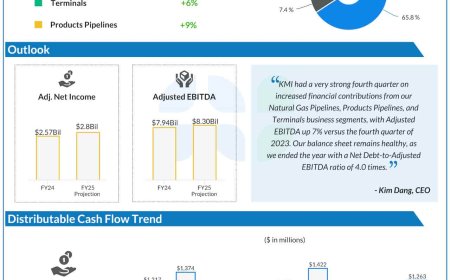Navigating Regulatory Changes in Business Financing
If running a business wasn’t already a tightrope walk, recent regulatory shifts in business financing have added a few more challenges to balance. Whether you’re sprinting to secure funding or cautiously managing your capital, staying on top of these changes is vital. The stakes are high – think of it as a chess game where […] The post Navigating Regulatory Changes in Business Financing appeared first on Insights Success.

If running a business wasn’t already a tightrope walk, recent regulatory shifts in business financing have added a few more challenges to balance.
Whether you’re sprinting to secure funding or cautiously managing your capital, staying on top of these changes is vital. The stakes are high – think of it as a chess game where every move counts. This guide will help you understand the regulatory landscape in the simplest way possible.
The Shifting Sands of Business Financing
From banking policies to SBA loans (Small Business Administration loans), regulatory changes can either slam the brakes on your business plans or give you the green light.
Take the SBA’s recent revisions, for instance. For businesses seeking financing, the “inability to secure non-government financing” became stricter on August 1, 2023.
What does this mean in plain English? Traditional lenders will look at your situation more critically before the SBA steps in. It’s a bit like trying to borrow a lawn mower from your neighbor, and they only agree if the guy down the street says no first.
But these updates aren’t just red tape. They’re also opportunities. Understanding the rules lets you play within them like a pro – and even gain a competitive edge.
Why This Matters
Imagine you’re a chef whipping up a signature dish, but some of your ingredients just became unavailable. Regulations are the ingredients of the financing world – they decide what’s allowed on the menu. Without knowing the right substitutes, your “dish” (or business) might fall flat.
For example, SBA loans – like the super-popular 7(a) loan – now demand more disclosure and collateral for ownership shifts. Yes, it’s a tad annoying. But when you clear these hurdles, you gain access to loans with friendlier interest rates and terms.
Where Regulations Bite Hardest
Here’s how recent regulatory changes are nudging – or shoving – businesses across key areas:
1. Securing Government-Backed Loans
Regulations recently tightened around SBA loans, which are already picky when it comes to documentation and credit scores. For loans over $500,000, prepare to pony up a down payment of at least 10%.
Considering an SBA Express Loan? These loans cap at $500,000 and are faster but less flexible. The silver lining? SBA loans remain excellent for capital-intensive projects like acquiring equipment or expanding your office.
Remember: Government-backed loans have rules, but they favor small businesses. If you’re curious about the nitty-gritty, check out this handy guide on the criteria for securing SBA loans.
2. Compliance With Eligibility Rules
Recent SBA rule tweaks now emphasize that businesses must be “unable to obtain financing elsewhere” before qualifying.
Translation? Don’t skip the step of showing that private loans weren’t an option – it’s a box that needs ticking, even if it feels as fun as filling out tax forms.
3. New Expectations for Documentation
If you hate paperwork, buckle up. Businesses now need to whip out detailed profit-and-loss statements, year-to-date balance sheets, and historical tax returns when applying for financing. It’s tedious, sure, but it reinforces your case.
Pro Tip: Keep your finances organized, and don’t leave this prep until the last minute. Great documentation is your golden ticket.
Practical Ways to Stay Ahead
No one has a crystal ball to predict every regulatory shift, but taking a proactive approach can help you sleep better at night (or at least save you from panicked midnight Googling):
- Stay informed: Regularly check resources like the SBA and industry blogs. Bookmark go-to sites like Lendio’s blog for updates.
- Talk to experts: An experienced loan advisor or financial consultant can be your best ally. Think of them as your Sherpa in the mountain range of government-backed financing.
- Leverage your network: Other small business owners are often the best sources of real, unfiltered advice. Join local meetups or online forums to tap into insights.
Why It’s Worth the Hassle
Sure, staying compliant can feel like threading a needle blindfolded, but the rewards make every head-scratching moment worth it.
Once you have reliable financing locked in, you’ll run smoother, grow faster, and feel far less panicky about the dreaded “unexpected expenses.” Plus, navigating these challenges shows resilience – that buzzword every investor or lender loves to hear.
How to Take Action
Navigating these shifts in business financing isn’t a sprint. It’s a marathon. Start by learning the ropes of SBA requirements and identifying what programs match your needs. Tools like the SBA loan calculator or pre-screening services can save tons of time and effort.
Need help understanding the fine print? Whether you’re pitching a lender or applying for government-backed loans, stay informed and prepared. A little legwork now means fewer headaches later. Better yet, check out the SBA loan guide tailored for entrepreneurs like yourself – and start making moves today.
The post Navigating Regulatory Changes in Business Financing appeared first on Insights Success.











































